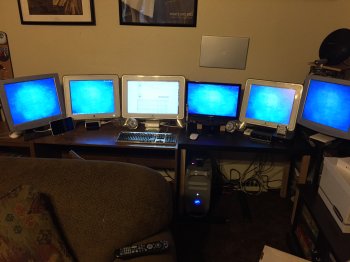For around 5 years or so I've been refusing to subscribe to Adobe's Creative Cloud model, instead utilizing my CS6 Master Collection for all my professional design work. It's handled everything with aplomb and I have no regrets. I've saved about $6000 this way (2 users / 5 years / $600 per user per year).
But more and more now I've been running into issues with vendors and/or clients supplying art originally created in CC (like company logos, and other content they need translated to new design). Usually I can ask to have it saved in CS6, but this is becoming less of an option; plus it makes me look old and busted to my clients.
So I'm biting the bullet and signing up for Adobe CC. I've been downloading the apps all day. I haven't had much chance to look around inside, but the brief look I had in Photoshop has got me a bit concerned about the interface changes and whether there will be a learning curve as I get up to speed.
A little background: I've been a designer since the mid-80's so I'm no spring chicken, and I've used Adobe products from Pagemaker all the way through InDesign, Photoshop and Illustrator.
Any issues or learning curves with jumping from the CS6 Dark Ages to CC?
But more and more now I've been running into issues with vendors and/or clients supplying art originally created in CC (like company logos, and other content they need translated to new design). Usually I can ask to have it saved in CS6, but this is becoming less of an option; plus it makes me look old and busted to my clients.
So I'm biting the bullet and signing up for Adobe CC. I've been downloading the apps all day. I haven't had much chance to look around inside, but the brief look I had in Photoshop has got me a bit concerned about the interface changes and whether there will be a learning curve as I get up to speed.
A little background: I've been a designer since the mid-80's so I'm no spring chicken, and I've used Adobe products from Pagemaker all the way through InDesign, Photoshop and Illustrator.
Any issues or learning curves with jumping from the CS6 Dark Ages to CC?


